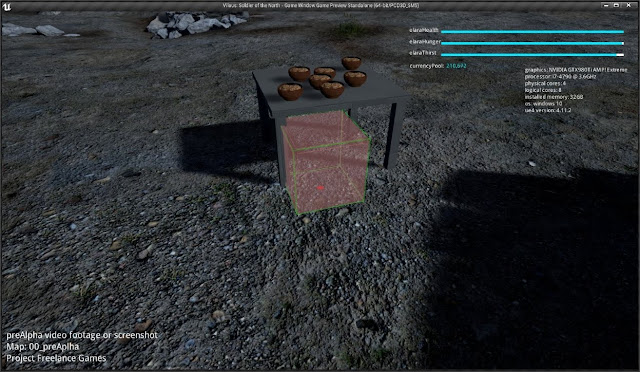Since the last post on this blog, we've made some improvements to the sandbox system. Specifically, we re-added and fixed placement collision testing. If on a valid surface, the game will test to see if the item you're trying to place is overlapping anything in the world, and it does it with a much higher degree of accuracy compared to the old system. Below, a player can be seen placing a box underneath a table with both valid and invalid placement feedback. This shows how fine the system can be tuned for placing objects next to other objects.


This new collision detection system properly updates based on the placement mesh that is selected, where the placement mesh is in the world, and how the player orients it.
We've also acquired a copy of Substance Painter 2 at a discounted price to use for texturing items in V:SotN.


Above, there is a quick model that was created to play around with the new software and learn the new tools. It's a small spool of thread, only 2.5in (6.35cm) tall. It comes in four different states to add a bit of diversity to the scene. The base thread texture is also white for a reason; I can easily create instances of the thread material in UE4 and change the color to whatever I’d like it to be.
Substance Painter 2 has a slightly different tool set that I’m trying to adapt to, so the first few models I paint might be bad. I’m working on learning some of the more advanced features like how to set up my model for use with some smart filters and materials in regards to things like automatically generated edge wear and ground dirt.
I’m already dabbling in some features like masks and filters.

Finally, I've also ordered some more hard drives for backups and storage of my game. I now have a total of 3TB internal storage in my computer. You can see my main, all purpose C: drive, and my external 3TB drive that I use for Steam games. You can also notice that I only have one of the new hard drives set up and divided into three partitions based on the media type. (This is because I forgot to order SATA data cables, so I had to rip my house apart looking for the spare one I had laying around. Once I get my new cables in the mail, I'll have the second new drive set up for backups as well.)








